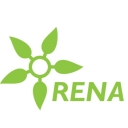Regional Training: Capacity building on compliance with chemicals legislation, with emphasis on REACH/CLP linked to IED
Date: 13-14-15.05.2014
Place: Bijela, Montenegro
Organizer: ECRAN Secretariat and EC TAIEX UNIT
In the REACH regulation, various stakeholders will have their specific roles, responsibilities and competences identified. The know-how regarding the hazards and potential risks of chemicals lays with the manufacturers and importers and with the national agencies/authorities. The so called “exposure scenarios” in the REACH system are the Conditions of use for specific chemicals.
REACH is complemented by the new Regulation for Classification, Labeling and Packaging of Substances and Mixtures (CLP Regulation, January 2009). This Regulation incorporates the classification criteria and labeling rules agreed at UN level, the so-called Globally Harmonized System of Classification and Labeling of Chemicals (GHS). It is based on the principle that the same hazards should be described and labeled in the same way all around the world. Using internationally agreed classification criteria and labeling elements is expected to facilitate trade and to contribute towards global efforts to protect humans and the environment from hazardous effects of chemicals.
The IED is the successor of the IPPC Directive and in essence, it is about minimizing pollution from various industrial sources throughout the European Union. Operators of industrial installations operating activities covered by Annex I of the IED are required to obtain an integrated permit from the authorities in the EU countries. About 50.000 installations were covered by the IPPC Directive and the IED will cover some new activities which could mean the number of installations rising slightly.
An important synergy between REACH and the Industrial Emissions Directive is that information on the substance under the registration and authorization procedures may be used to support the development of BAT reference documents. The risk assessment of substances under REACH that are manufactured or placed on the market in quantities of 10 tons or more per year comprises the complete life-cycle of the substance and therefore includes the use and manufacture of these substances in industrial installations covered by this Directive and options to avoid and control emissions. In this respect, Recitals (14) and (21) of REACH state that the information yielded on substances may also be used in risk management procedures under other EU legislation.
Most of the ECRAN beneficiary countries are at a different level when it comes to transposition of the EC chemicals legislation and additional efforts are needed in the area of its implementation. The REACH and CLP regulations, interlinked amongst other with the Industrial Emissions Directive (IED), are covering major chapters of chemicals legislation and industrial pollution control.
Objectives of the meeting:
Overall objective
The overall objective is to strengthen regional cooperation between the EU candidate countries and potential candidates in the fields of environment and climate action and to assist them on their way towards the transposition and implementation of the EU environmental and climate policies and instruments which is a key precondition for EU accession.
Specific objectives of the assignment
Within the scope of regional cooperation and assistance in transposition and implementation of EU environmental legislation, the specific objective of the assignment is to provide assistance in strengthening the institutions and building capacity in complying with the EC Chemicals legislation.
Emphasis will be placed on the REACH and CLP Regulations, interlinked with the Industrial Emissions Directive as these are covering major chapters in chemicals legislation and industrial pollution control.

